If you own a 3-gallon tank or a 3.5-gallon tank, then you’re probably well aware of the limitations that come with using such a small volume of water to house your tropical fish. Compared to a larger tank, these nano tanks can be a challenge to stock with fish that will live happily and healthy in such a small space.
However, if you take the time to do your research and select the right fish for your tank, it is definitely possible to create a beautiful and thriving mini-aquarium. In this article, we’ll provide some recommendations on the best fish for 3 and 3.5-gallon tanks, as well as some stocking tips to help you along!
15 Best Fish for 3 And 3.5 Gallon Tanks
Having discussed some general stocking tips and guidelines, we’re now going to provide a list of our favorite fish for smaller tanks, to help you with 3 and 3.5-gallon gallon fish tank ideas:
1. Guppies
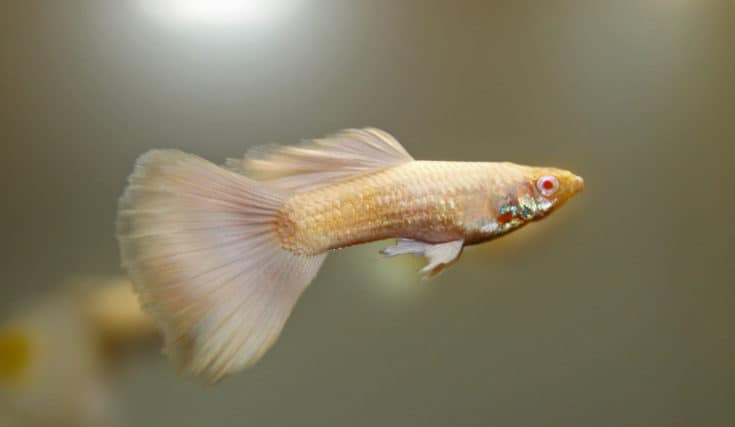
Often considered one of the hardiest nano fish around, guppy fish do exceptionally well when kept in tanks of 3 gallons or less. They’re also very peaceful and fun to watch as they swim around the tank – plus, their colorful bodies add a vibrant splash of color to your aquarium. Fancy guppies even come in a variety of different colors and patterns, so you’re sure to find a few that you love.
Guppies are one of the best starter fish for beginners who want to start with something that’s relatively low-maintenance. They do well in a variety of water conditions and can even tolerate a slightly alkaline pH level. No wonder these tiny, colorful critters are some of the most popular freshwater fish in the hobby!
2. Endler’s Livebearers
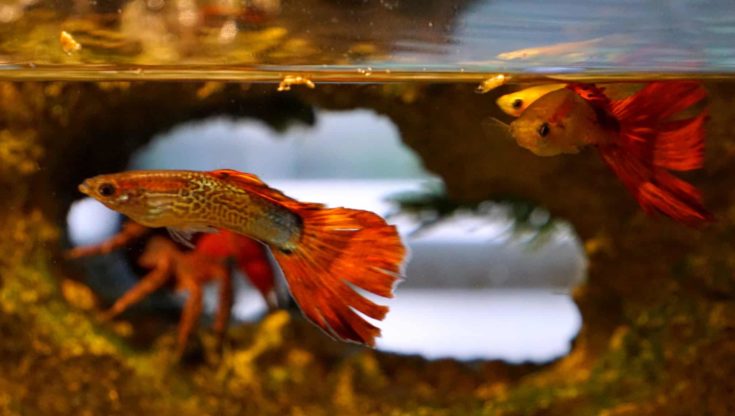
Although Endler’s livebearers are often confused for guppies, these little fish pack a bit more of a punch. They’re still relatively peaceful fish that won’t cause any problems in your community tank, but they’re also active swimmers that will occupy the top half of your aquarium. Endlers come in several different color variations including red/orange, green/yellow, blue/grey, and black/white.
Endler’s livebearers are one of the easiest types of fish to breed, making them a great option for novice fish keepers. Overpopulation might become a problem if you don’t have the proper tank size to house them, so make sure to provide plenty of hiding spots for pregnant/nursing females and semi-aquatic vegetation for fry grow-out tanks.
3. Cherry Shrimp
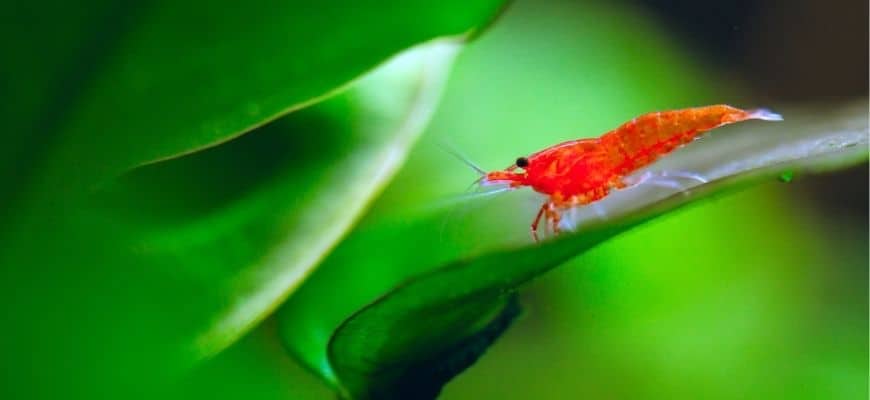
Though not technically fish, Cherry Shrimp make a great addition to any small tank. These little invertebrates are very peaceful and will not harm your other fish. In fact, they often become the favorite of betta fish and other timid species due to their passive nature.
Cherry shrimp are easy to care for and can even help with tank maintenance by eating algae and decaying plant matter. They come in a variety of colors, including red, orange, yellow, green, and blue. You can keep a small school of them in your 3 or 3.5-gallon tank or just add a few as a colorful addition.
4. Ember Tetras
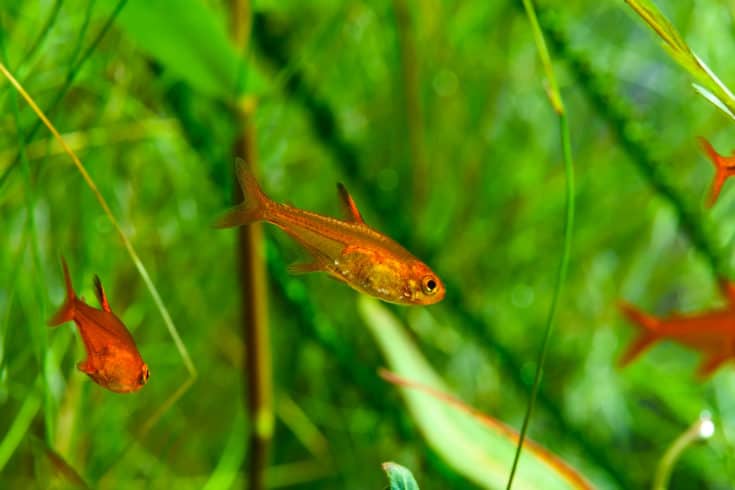
Ember Tetras are another great option for a small tank. They are energetic and playful fish, making them a lot of fun to watch. They’re also hardier fish than most and can tolerate a wide range of water conditions, making them a great choice for novice aquarists.
Ember tetras come in several different colors, including red, yellow, blue, and green. Their bodies are transparent, which lets you see their internal organs as they swim around the tank. Ember tetras are a peaceful type of fish that will coexist peacefully with other small species.
5. Chili Rasboras
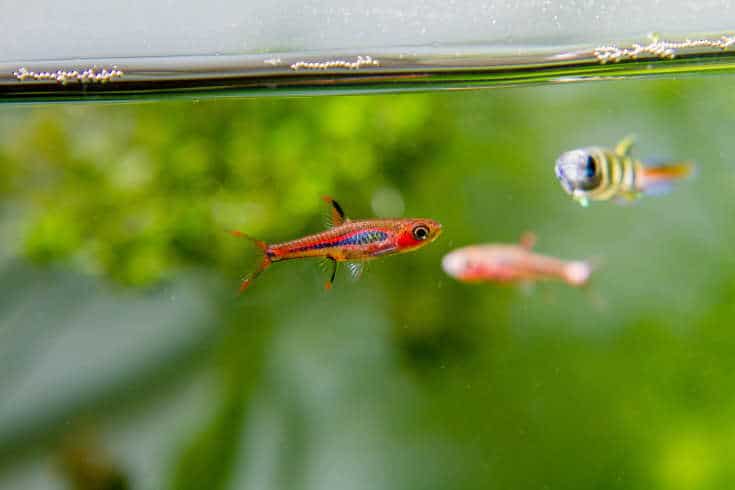
If you want the energy and fun of a larger tank, but still don’t have the space for a full-sized community tank, look no further than chili rasboras. These friendly fish come in a variety of vibrant colors and are much more active than many of their counterparts. The fact that they’re also hardy fish makes them a popular choice among beginner aquarists.
Chili rasboras are active schooling fish, so you’ll want to keep at least six of them in your tank. They do best in planted tanks with plenty of hiding spaces and areas for swimming. Try to maintain a constant temperature of around 75 degrees F in order to keep them healthy and active.
6. Zebra Danios
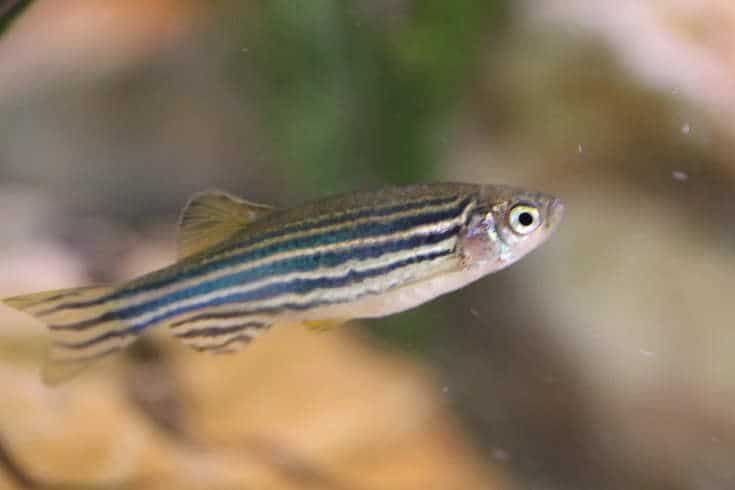
One of the lowest-maintenance nano fish for a 3-gallon fish tank is the zebra danio. These hardy little fish can tolerate a wide range of water conditions and are very active swimmers. True to their name, their bodies are striped in black and white, making them a colorful addition to any tank.
Zebra danios are schooling fish that will thrive in planted tanks with lots of plants and plenty of room to play. These are peaceful fish that will get along with most other small fish. You can keep a group of them in your 3-gallon tank without overcrowding.
7. White Cloud Mountain Minnows
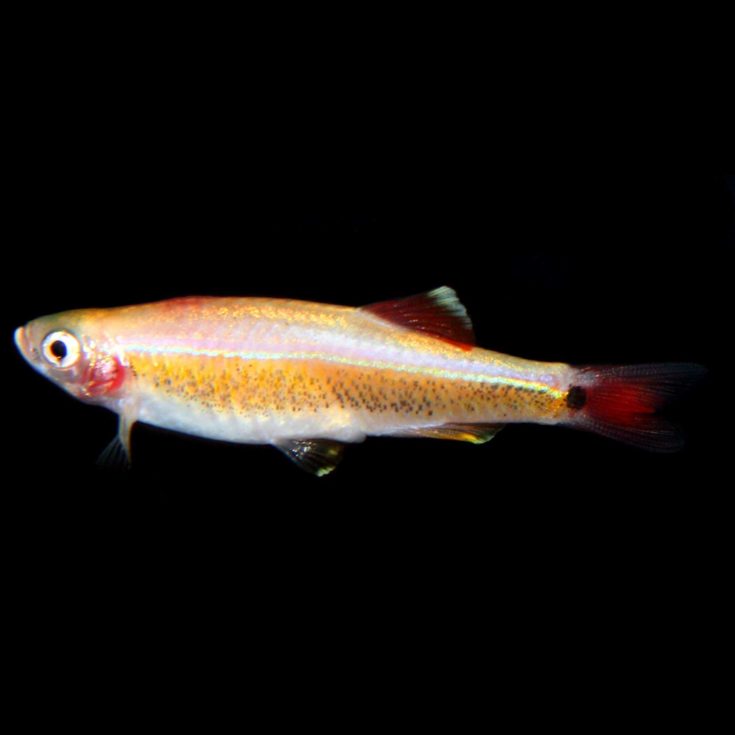
Minnows as a fish species come in a variety of shapes and sizes, but one of the most popular minnows for small tanks is the white cloud mountain minnow. These active fish are schooling fish that will thrive in planted tanks with lots of artificial plants and plenty of room to play. They are peaceful fish that will get along with most other small fish.
White cloud mountain minnows are hardy fish that can tolerate a wide range of water conditions. They prefer water parameters between 64 and 76 degrees F and a pH of 6.0 to 8.0. Though not particularly high maintenance, they will do best in tanks with regular water changes.
8. Otocinclus
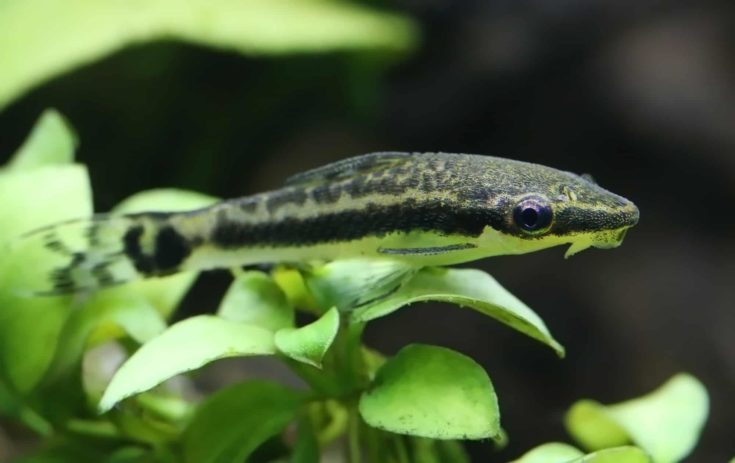
If you’re looking to house an individual fish in your 3-gallon nano tank, look no further than the otocinclus or “otocinclus catfish”. These little guys have small bodies and look almost like a cross between a catfish and a suckerfish.
Otocinclus are primarily herbivorous fish that will do best in tanks with lots of live plants. A diet of algae wafers and blanched vegetables will keep them healthy and happy. They can tolerate a wide range of water conditions, but prefer water parameters between 68 and 78 degrees F and a pH of 6.5 to 7.5.
9. Neon Tetras
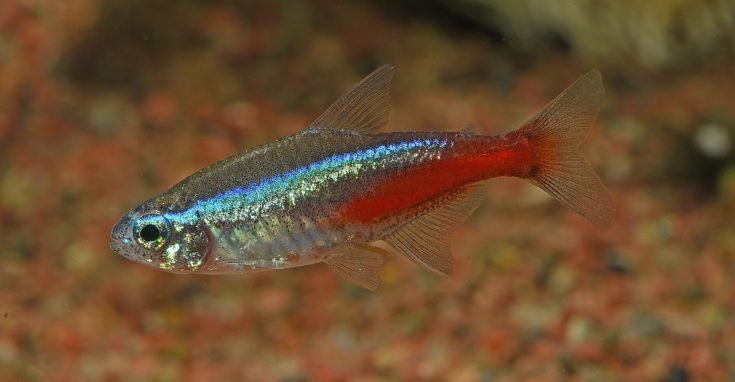
Neon Tetras are perhaps some of the most iconic fish in the hobby! These iconic fish are hardy, colorful, and active swimmers that will brighten up any home tank. They come in a few different color variants, including blue neon tetras, red neon tetras, green neon tetras, and albino neon tetras.
Neon tetras are peaceful fish that don’t require too much swimming space. They’re relatively hardy and make an excellent choice for beginner fishkeepers, but do keep in mind that you’ll likely need a heater as their optimum temperature range is 74-82 degrees F.
10. Betta Fish
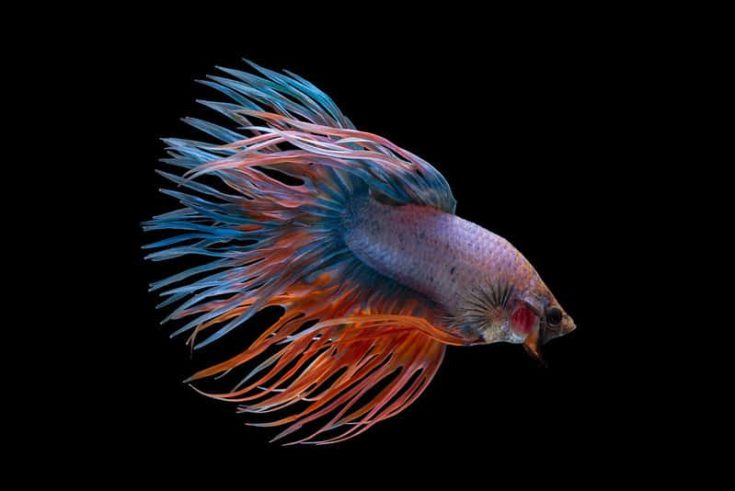
Betta Splendens, otherwise known as the Siamese fighting fish are frequently assumed to be solitary fish due to their aggressive nature in the wild. However, domesticated bettas can be kept in small groups without issue as long as there is plenty of space for each fish. Male bettas will typically have more intense coloration than females and are prized for their beautiful fins.
Betta splendens require plenty of swimming space, so a 3.5-gallon tank is usually the smallest recommended size. Many parents opt for the betta as the first pet fish for kids as they’re very forgiving of first-timer mistakes. To make sure they’re happy, try adding one of these betta-friendly plants to your tank!
11. Least Killifish
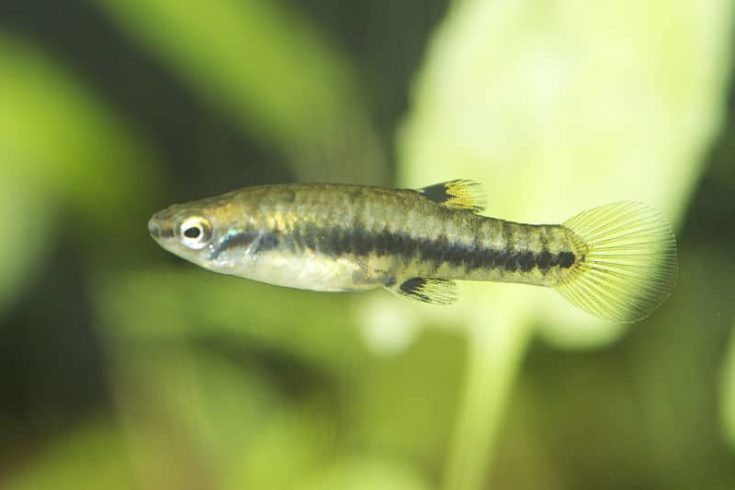
Least Killifish or Heterandria Formosa is one of the tiniest fish in the world. Due to their diminutive size, they are often used as feeder fish rather than kept in an aquarium. However, they are an excellent choice for a 3-gallon tank as they thrive in small spaces.
These little guys belong to a family of fish called livebearers, characterized by their production of live young rather than eggs. Unlike other members in this family, the least killifish is non-annual and can live up to six years!
12. Asian Stone Catfish
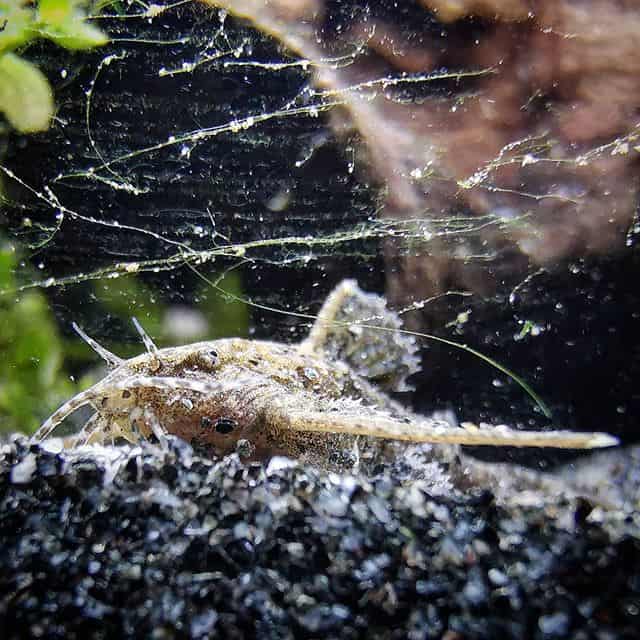
Yet another popular fish in the hobby is the Asian Stone Catfish. These bottom dwellers are a peaceful species that will do well in tanks with plenty of hiding places. and aquarium plants. They are not particularly active swimmers, so they make an excellent choice for those who want a low-maintenance fish.
Asian stone catfish can grow up to 3 inches in length, so a 3-gallon tank is the smallest size recommended. However, be sure to provide plenty of hiding places as they will become stressed if they feel exposed.
13. Pygmy Gourami
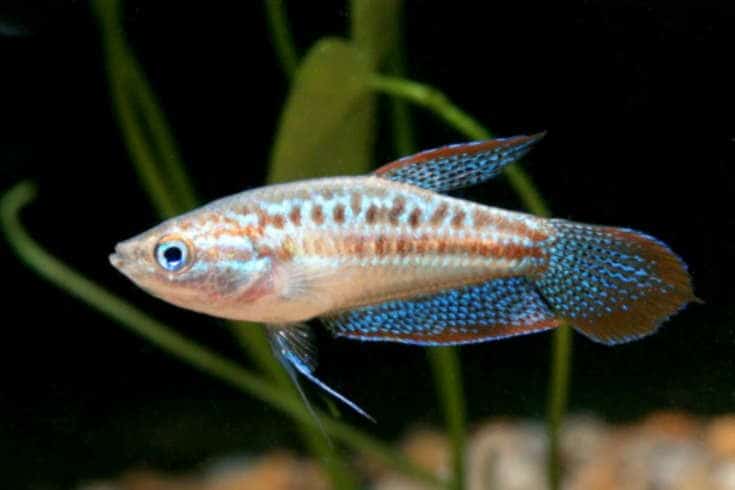
Pygmy Gouramis are some of the most energetic freshwater fish around, making them a popular choice for those who want an active fish. This is a peaceful species that should not be housed with larger or nippy fish. They do well in planted tanks and can even have excellent fish compatibility with bettas!
As their name suggests, these guys are quite small at 1-3 inches long. Like most in the gourami fish family, they are bubble nest builders. A 3-gallon tank is the smallest size recommended.
14. Pea Puffer Fish
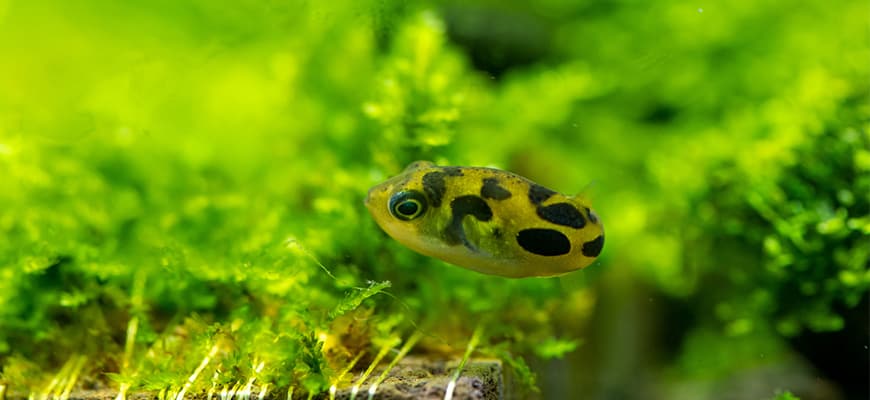
We’ve covered mostly beginner fish, but we’d be remiss to not include the Pea Pufferfish! These tiny fish get their name from their ability to inflate themselves to appear larger than they are. They’re a striking neon green color and add an interesting element of movement to your tank.
Pea puffers should only be kept by advanced aquarists that have a little more experience in fish keeping because this is a difficult fish to care for. They’re susceptible to poisoning from medication and plants, so ensuring that your tank is completely free of any kind of chemical residue is absolutely essential!
15. Bumblebee Goby
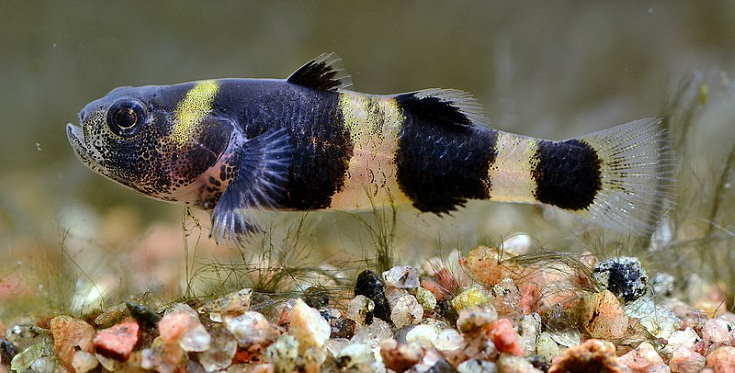
Among the many fish options on this list, the Bumblebee Goby is one of the most unique. These fish get their name from their black and yellow stripes, which resemble those of a bumblebee. They are a timid species that does best when kept in small schools.
Bumblebee gobies can grow up to 2 inches long, making them a good choice for a tank with limited space. Remember to keep up with tank maintenance so that have healthy, happy fish on your hands at all times.
Tips For Fish Selection: Things To Avoid
The list of fish we provided above is a good starting point for anyone looking for a new addition to their 3-gallon tank. While you are free to explore a myriad of different options, there are some factors you can avoid to ensure that your small tank has the best chance of success.
Avoid Large-Bodied Fish Species
Larger-bodied fish require a lot more space, so it’s best to avoid them altogether if your tank is only 3 gallons. Some larger fish may even jump out of the tank, which can be dangerous for those who have curious pets or young children around.
In addition, bigger fish produce more biological waste as they eat more, which can make maintaining healthy water parameters a lot harder. Dangerous ammonia and nitrite levels can quickly build up in a small tank if you’re not careful, so it’s always best to steer clear of fish larger than 2 inches long.
Avoid Aggressive Fish Species
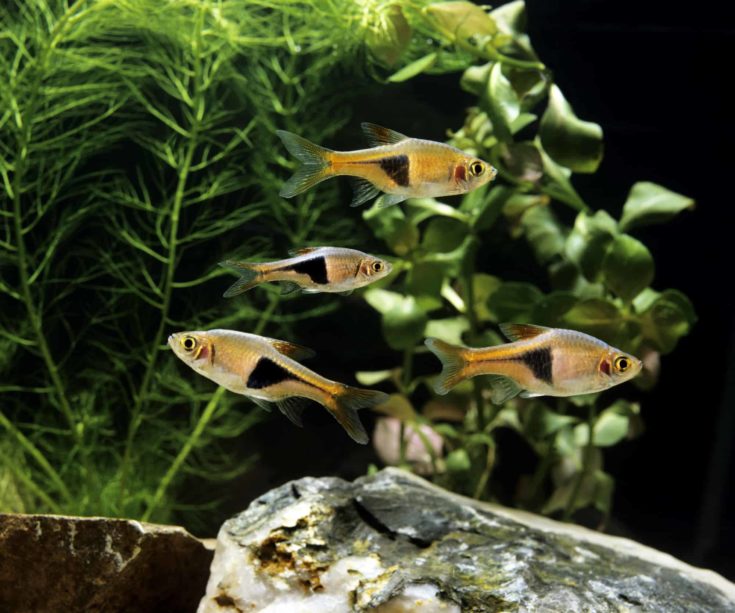
Aggressive fish bully others and can be especially harmful if they are housed in a small tank. This is because territorial fish will fight other members of their species to claim dominance and carve out a territory of their own. In a larger tank, disputes can be easily avoided because the fish have more space. But in a small tank, these confrontations can result in serious injuries or even dead fish.
Therefore, it’s best to avoid aggressive fish altogether for the sake of your other occupants. Size shouldn’t be the only factor in choosing fish, so remember to do your research about each species you are considering. Even tinier fish, such as the harlequin rasbora, can be aggressive if they don’t have enough space to claim as their own.
Keep Fish in Quantities That Are Appropriate for the Tank
Picking out one or two fish for your 3-gallon tank is probably not enough. Because small tanks are less stable than larger habitats, it’s important to ensure that you have more than one occupant so that any new residents can school with their own kind.
Adding 2-3 small schooling fish of the same species will help maintain the water parameters and ensure your tank is still a healthy living space. That way, you can still enjoy the company of multiple fish without having to contend with any inevitable aggression that may develop if they’re not given enough space.
Fish Species To Avoid
By this point, you should have a good understanding of the rules of thumb you should abide by when stocking a nano tank. Although we’ve discussed several fish selection tips, there are still several fish species that often mistakenly get placed in enclosures that are smaller than what they require. This results in a tragic situation where the fish slowly dies due to stress or lack of space.
Here are a few examples of fish that should not be kept in a 3-gallon tank:
1. Goldfish
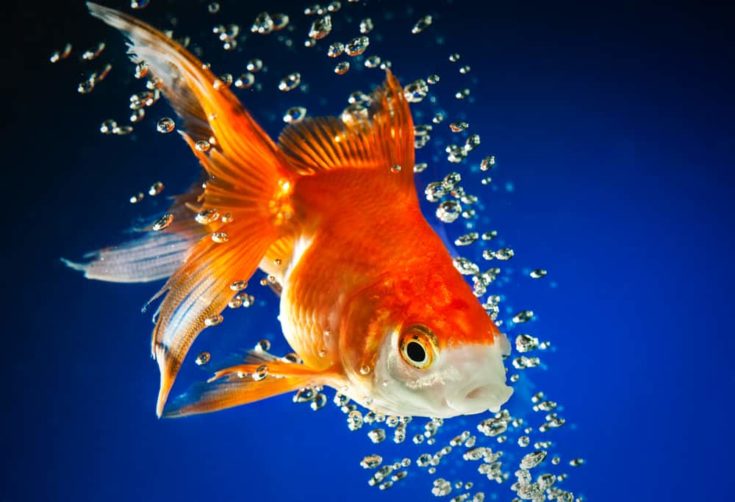
Goldfish are beautiful and can make an excellent choice for a beginner because they’re easy to maintain. However, goldfish need a lot more than just a bowl or 3-gallon tank! They need a pond or at least a 20-gallon tank to thrive. To learn more about why goldfish shouldn’t be kept in bowls, check out this insightful article.
2. Tiger Barbs
Tiger barbs are a popular fish for community tanks, but they do not fare well in small tanks. These active fish need plenty of space to swim and will become stressed in a confined environment.
3. Rainbowfish
Rainbowfish are a popular choice for those who want a colorful fish, but they also need plenty of space. These fish can grow up to 3 inches long and should be kept in a tank with at least 10 gallons of water.
4. Platies
Platies are peaceful fish that does well in a community tank. However, they can grow up to 2 inches long and should be housed in a 10-gallon tank or larger. This will ensure that they have plenty of space to swim and avoid any potential aggression from larger fish.
5. Cory Catfish
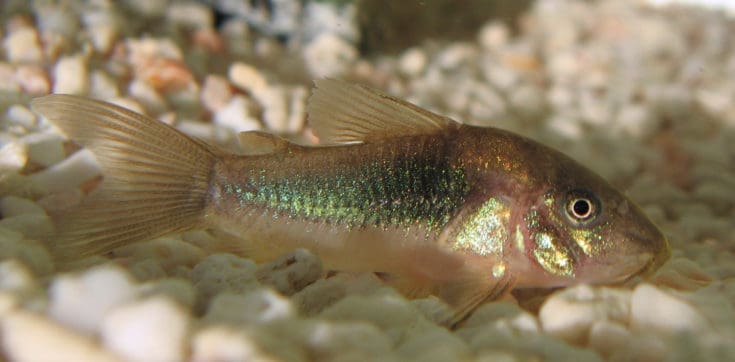
Cory catfish are a popular choice for small tanks because they’re small and docile. However, they should not be kept in an enclosure with less than 5 gallons of water because they’re schooling fish that needs to be with their own kind.
Stocking Tips For Smaller Tanks
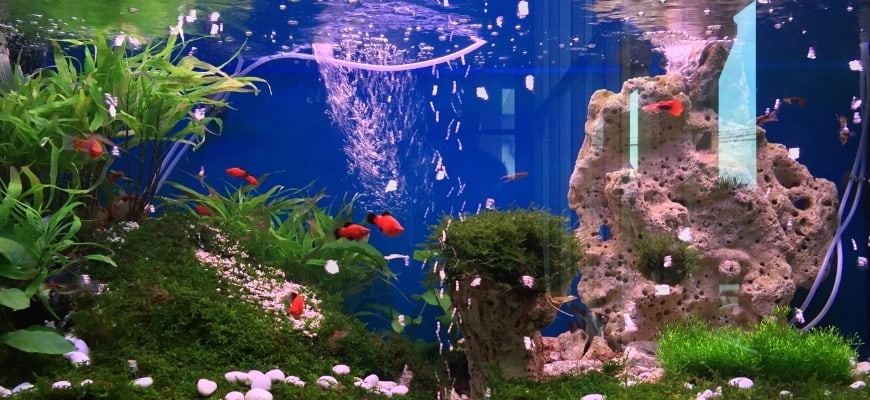
Stocking smaller tanks can involve a little more planning than when you’re choosing fish for larger tanks. We’ve previously written an article on aquascaping ideas for smaller tanks, but knowing how to stock them is just as important. Here are some things to keep in mind:
Know The Rules Of Thumb
Rules of thumb shouldn’t be applied to stocking a tank without taking into consideration other factors such as the nitrate and pH levels of your water, the type of filtration you have, etc. However, they’re still a good place to start if you’re new to fish-keeping or just want to get an idea of what types of fish will be suitable for your nano aquarium.
In general, you can keep an inch of fish per gallon of water in most fish tanks. This means that a 3-gallon tank can house up to 3 inches of fish, and a 3.5-gallon tank can house up to 3.7 inches of fish. When it comes to shrimp, you can keep about 10 shrimp per gallon of water. However, this assumes that you have a well-cycled tank. If you’re starting from scratch, it’s best to be conservative.
Consider Using A Smaller Tank For Specific Purposes
Just because you have a 3 or 3.5-gallon tank doesn’t mean that it needs to be dedicated as a permanent home for your pet fish. In some cases, it might make more sense to use these smaller tanks as breeding tanks and fry grow-out tanks instead of full-time homes for adult fish.
Also, these smaller-sized aquariums make perfect quarantine tanks for new fish. You can also use them to house sick or injured fish until they’re healthy enough to be reintroduced into your main tank. When you quarantine new or sick fish in a separate tank, you can provide them with the treatment they need without worrying about chemicals contaminating your main tank’s water column.
Maintain Excellent Water Conditions
One of the most important things to remember when stocking a small tank is that it’s vitally important to maintain excellent water conditions. In a smaller tank, even a small change in the water parameters can quickly lead to fish stress and death. Maintain safe ammonia and nitrate levels in fish tanks by performing water changes regularly.
In addition, it is important to use an appropriately-sized filter – this means one that is neither too big or small. Filters that are too large can make it more difficult to perform routine maintenance checks on your tank, but filters that are too small will not be able to provide the proper amount of filtration for your tank. Here are some of our top filter recommendations for smaller tanks.
Conclusion
We hope this article on the best fish for smaller tanks has been helpful. Remember to always do your research before adding any new fish to your tank, and to use this guide as a general rule of thumb. By following these guidelines, you’ll be sure to create a healthy and balanced ecosystem in your nano tank!
Did you find this article helpful? Don’t forget to share it with your friends! And if you’ve had any success with stocking your own small tank, be sure to let us know in the comments below. We love hearing from our readers!
